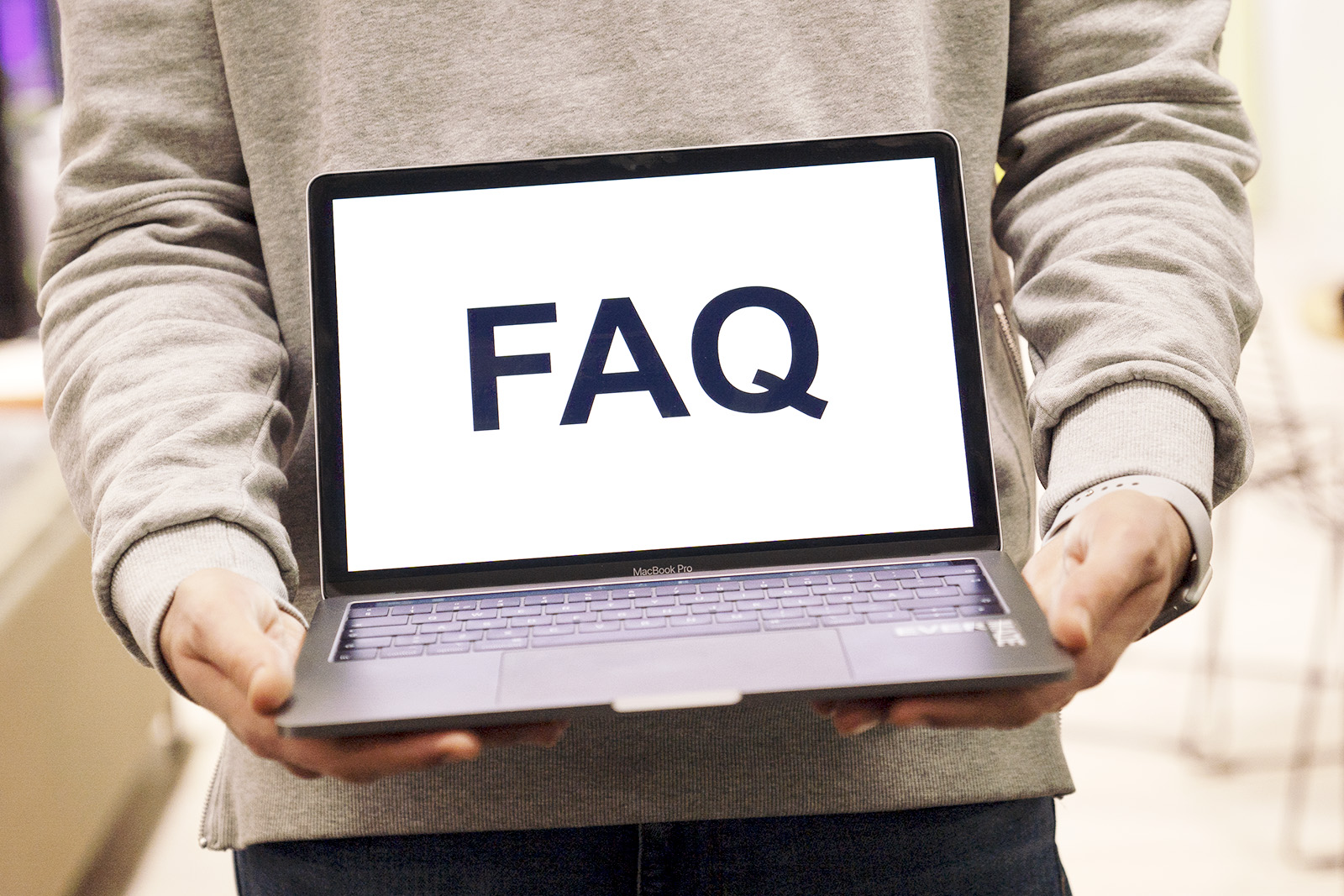When should a website be renewed?
In the best case scenario, a website is very long lasting. It adapts to the changes in a company’s business, serves as an important marketing tool, constantly provides users with quality content and, of course, converts users into customers. However, a long-lasting website requires a sound technical foundation and constant maintenance. A site can lose its value right from the start if it is poorly designed and implemented or the company’s online strategy lacks clear goals.
Websites are constantly being renewed for a number of reasons. This article lists the issues that we come across most often. If you recognize any of these problems on your own website, remember that many are struggling with exactly the same things. Also keep in mind that all of these issues can be solved.
▸ The business has changed or the brand has been renewed
▸ Problems with content production
▸ Problems with the current partner
▸ Technical problems
▸ Visual problems
▸ Not enough users or users do not convert
▸ Conclusion
The business has changed or the brand has been renewed
It is common that a business goes through change in one way or another, but there isn’t much enthusiasm when it comes to revamping the website. When the company’s strategy changes, its brand is renewed or it starts selling new products or services, the website should communicate this change. Website redesign might also be considered when the company wants to find a better platform for sales and marketing automation.
What we also encounter a lot is changes in an organization’s internal dynamics. Perhaps the marketing expert has left, the person in charge of updating the website has taken on new responsibilities or a new marketing manager has started in the company. The website does not always keep up with internal changes as other more urgent matters take priority. In these cases, you should consider who is really responsible for developing the company’s online presence and how more resources could be obtained for it. It is also good to remember that when marketing professionals leaves the company, they usually take a large piece of information with them, regarding, for example, the current website system. To avoid leaving others struggling, marketers should them before moving on to other tasks.
Depending on the volume of the internal changes, a completely new website may be necessary, while sometimes small updates and tweaks here and there are enough. If your company does not have a long-term plan for its digital services or platforms, a partner that focuses heavily on strategy can be a good idea.
Problems with content production
Updating content is difficult
Updating content on the website can be difficult due to a rigid and outdated technical foundation. Creating and editing content can then become too time-consuming and bring unnecessary challenges to the daily work of content producer If a marketer or a content producer needs the help of a developer for simple content management tasks, it is worth considering whether the technical base of the site could be made more user-friendy and easy to use.
A fairly typical situation for our clients is also that their company’s brand has been renewed, but due to difficulties in content production, the website lags behind everything else. If a new brand cannot be easily rolled out online, the brand renewal can even feel like money was wasted.
Creating content is costly and time-consuming
If your site is technically outdated, poorly implemented or content producers do not have the right tools, creating new and editing existing content can be too expensive and time-consuming.
If the site is originally built incorrectly, content producers tend to rely too much on the help of developers. Waiting for a developer to work their magic usually slows down marketing work and creates extra costs. This is not the ideal in marketing teams, where things tend to move from ideas to realizations very quickly. Creating multiple versions of the same page for A/B testing and building campaign pages should be fast and efficient as well – of course in a way that the visuals stay in line with the brand and the user experience remains positive. Content producers and marketing professionals should also have efficient tools to collect data from users to help improve existing content.
Problems with the current partner
Communication is challenging or the parnership isn’t teaching anything new
Competition between digital agencies is fierce and there are a wide variety of players in the industry. When choosing a digital partner, think about the solutions offered, the quality of the work and the budget. We’ve also found that the right values, kindness, passion for work, long-term commitment to the customer relationship and fluency in communication are often very important qualities when choosing an agency.
Whether the client wants the end product as a turnkey project or is looking to work closely with the agency on every phase of the project, identifying the client’s needs is the key. We have often encountered situations where the client’s collaboration with their former digital partner has begun to fail due of a lack of communication. It is also possible that the solutions presented by the partner no longer offer anything new or no spike the client’s interest. In this case, it can be smart to start from a clean slate with an agency that has a different approach to digital projects. Hiring a new partner can bring in new ideas, spark innovation and teach new things.
Technical implementations seem expensive
If the price of rolling out new technical features seems too high every time, it is natural to start looking for more cost-effective solutions. Our industry is highly competitive and digital agencies have different models for pricing their projects. Implementations vary greatly in price as well as in everything else, but a new client often has more leeway with invoicing than a long-term one.
From the client’s perspective, the most important thing is to understand what the price is made up of and what the stages of building a website are. When you buy a site, you pay professionals for their expertise, time, and vision. There is no clear answer to how much a website should cost, but usually the price range can best be assessed by the complexity of the site as it largely determines how much time is needed to build it.
Professional B2B websites are always tailored to the needs of the organization, facilitate the work of content producers and of course generate more and better business. It’s also worth noting that a website is rarely a one-off project – long-term success requires maintenance, testing, and ongoing optimization. If you are planning to renew your website, think of how to make the most out it now as well as in the future.
Technical problems
The site loads slowly
A slow site will inevitably mean a poor user experience, loss of valuable traffic, reduced search engine visibility and fewer conversions. A slow website also simply kills the user’s interest and ultimately, the company’s entire business can suffer. There can be a number of reasons for a slow site, ranging from large images to too many active WordPress plugins. Whatever the reason, finding a solution to the slowness is essential, whether it means rebuilding the entire technical foundation or just making a few tweaks on the site.
The site is not accessible
Accessibility is all about providing people with equal opportunities in the digital world. In Finland alone, more than a million people need more accessible online services. However, accessibility benefits all users, because it means convenience – like a smoothly operating user interface or content that is easy to digest. A non-accessible website usually doesn’t reach it’s potential customers well, as their user experience can be challenged by technical problems or difficulties finding or reading content.
In Finland, the law requires the accessibility of websites from several actors such as public authorities, payment services and services that require user identification. The law on the provision of digital services, which entered into force in 2019, is based on the EU Accessibility Directive, that in turn is based on the WCAG guidelines. Even if your site is not required to fulfill the WCAG A or AA level criteria, you should pay attention to accessibility when designing the site. If your site is currently not accessible, you may want to rethink its design to serve users better.
Visual problems
The site is not responsive
Nowadays, it is likely that a large part of your site’s users are browsing on a mobile device. Therefore responsiveness, adapting the layout of the site to the user’s device and screen size, is essential. Think of an online store, for example, that is not responsive: browsing product pages and making a purchase can be cumbersome. The site does not encourage visitors to become customers, the conversion rates drop, and sales results suffer.
Responsiveness also has a significant impact on search engine visibility: Google is very likely to leave a non-responsive site entirely out of search results in mobile searches.
Today, responsiveness is a standard in web design, and a non-responsive website should not even be considered as an option. Most of the sites of the organizations that contact us are already responsive. However, this does not mean that problems will never occur with different devices or monitors or that any optimization is not required. Responsiveness is not only about mobile users, but also browsing pages on large screens. A well-designed website takes into account the benefits of a large screen by bringing content better in front of the user’s eyes.
The visual look is outdated
People are constantly making subconscious assessments of the quality of things based on how they look. The visuals of a website affect how much users feel the brand brings value to them. Users are also more tolerant towards challenges in usability when they find the user interface visually appealing. A website provides an important opportunity to stand out from the competition, so visuals are definitely worth investing in.
It is very common for a client to tell us that their site is visually outdated or uninteresting. The site might operate smoothly, but its look just isn’t stylish enough or doesn’t match the organization’s brand. In this case, a redesign of the site is needed. In user interface design, attention should also be given to interactivity, navigation and the information hierarchy.
It’s good to remember that while visual elegance sparks the interest of users, it does not sustain interest in the long run. The users must be provided with genuinely interesting content in order for them to convert into customers.
There are not enough users or users do not convert
If your site doesn’t have enough users, users leave the site quickly or they don’t convert into customers, start solving the problem by asking what the purpose of the site is in the first place. Every website should have a clear mission and defined goals. The main goal for one website may be to generate cash flow through an online store, for one to encourage people register as a volunteer, and for another one to provide information on a topic. Whatever the purpose of the site, its performance and the fulfillment of goals should be tracked.
Carefully conducted keyword research, search engine optimization, and potential search engine marketing will greatly improve your site’s findability. It is also important to monitor the success of these using the data collected. Without proper metrics, however, analysis is only based on guesses and speculations. We often get clients asking us to clarify their site’s goals, to implement proper metrics, and to continuously collect and analyze data about visitors on the site. Sometimes this requires a site renewal, sometimes optimizing the old site is enough. It is important that collecting data is not stopped – data is only useful when it leads to concrete actions and is used to improve the business.
Conclusion
The need for a completely new website is easy to identify when there has been business change such as a brand renewal. Sometimes a website suffers from minor problems and the need for a new site is more difficult to assess. For example, a site may be technically functional, but the user experience is suffering from visual problems or marketers are lacking tools to analyze the data collected from site visitors.
If you are not completely satisfied with your site, the best and only thing to do is to start solving the issues. Consult professionals and find out what kind of solutions they have to offer. If you have any questions about the status of your website, you can contact us and we’ll talk about how it could be improved.














